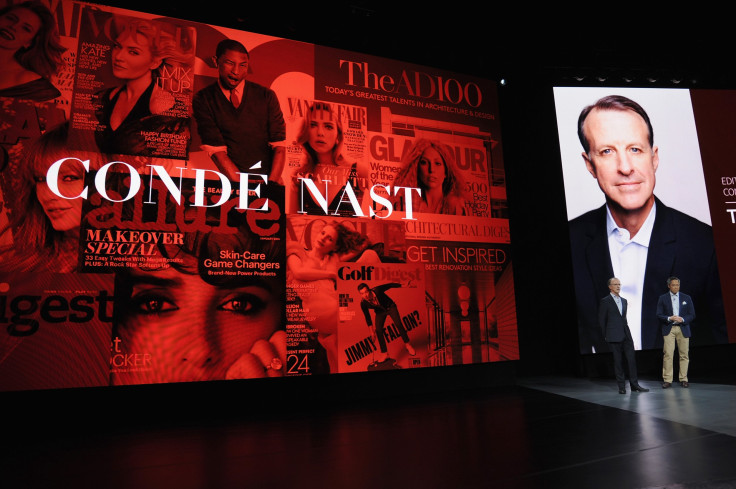From Gigaom To Details Magazine, 2015 Was A Year Of Death For Media, Old And New

Now you see them, now you don’t. Despite 2015’s media investment boom, from NBCUniversal’s snatching up stock in BuzzFeed and Vox to Axel Springer’s purchase of Business Insider, it was a hard stretch for many journalists and employees who lost their jobs. Several magazines and websites were unceremoniously scrapped, either by corporate motherships cutting costs or by running out of money altogether.
Significantly, the cluster of shops that went out of business included publications both digital and print, spanning genres from tech to fitness. It’s a sign that, no matter the buzz surrounding certain lucky players, this industry is still volatile.
No One Is Safe
The first to go was Fitness magazine, a 10-year-old property of Meredith Corporation (which merged with Media General in September). The company announced in January that it would cease publishing the print version of the magazine, replacing readers’ subscriptions with Shape magazine, which it acquired from American Media Inc.
The next and probably most jarring exit was the tech blog Gigaom, which suddenly found itself unable to pay its debts in March.
“Gigaom recently became unable to pay its creditors in full at this time. As a result, the company is working with its creditors that have rights to all of the company’s assets as their collateral. All operations have ceased,” a statement said. “We would like to take a moment and thank our readers and our community for supporting us all along,” it added.
All employees were laid off, some of whom landed on their feet in the following months. Re/code reported that Gigaom’s investors were aware of the impending doom for a while and scrambled to find a buyer. The most they could scrounge up was enough to pay off employees’ severance packages.
A husk of Gigaom has existed since August, when Texas-based startup Knowingly acquired the site.
Goodbye to Grantland
“After careful consideration, we have decided to direct our time and energy going forward to projects that we believe will have a broader and more significant impact across our enterprise,” ESPN said in a statement back in October.
That staid language was announcing the brisk and widely condemned shuttering of Grantland magazine, the sleeper hit sports and culture blog with an impressive stable of writers and a cult following. The site’s caretaker, Bill Simmons, had left ESPN months earlier for a new contract at HBO, leaving some 40 Grantland employees to the whims of ESPN. “It’s no secret that HBO is the single best place for creative people in the entire media landscape,” Simmons said in a statement, adding that "it was hard to imagine being anywhere else.”
Moving away from the culture coverage that had long distinguished it from the rest of sports journalism, Grantland began to look like a vestigial organ at ESPN.com, and the company decided to absorb the remaining bits and pieces of the magazine into the mothership.
One ugly aspect of the shutdown was the fact that several employees learned they had become unemployed from reading the news online.
Well that's the first time I've ever found out I was laid off via Twitter
— Michael Baumann (@MJ_Baumann) October 30, 2015Nothing Lasts at Conde Nast
November saw two Conde Nast-founded publications fold: first up was Lucky magazine, once a product that could boast 1 million subscriptions, catering to a more thrifty audience for women’s fashion than its gaudier cousin, Vogue.
Launched in 2000, the magazine was a notable part of Conde Nast’s lineup — which includes GQ, Vanity Fair, the New Yorker and Glamour — until the media giant sold it off in 2014 to Beachmint, which soon laid off employees and attempted to turn the publication into an e-commerce hub. Early in November, the new ownership dissolved the remains of the magazine.
Only a few weeks later came the end for Details magazine, the offbeat alternative to GQ and Esquire that Conde Nast bought in 1988. Despite its gains in circulation from around 500,000 to 550,000, Details was yet another victim of the declining revenue from ad sales in print media.
As usual, consolidation followed as 60 employees faced layoffs. The void left by Details, the company said, would be filled by GQ Style, which went from being a mere supplement to its parent magazine to a quarterly publication with a matching online presence to boot.
The demise of both publications was part of a pattern all too familiar to those working in legacy media: In an effort to catch up with the rise of digital media, trusty print products, no matter their progress in circulation, continue to be sacrificed in order to recoup expenses and funnel more money into online publications.
© Copyright IBTimes 2024. All rights reserved.






















